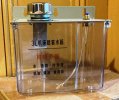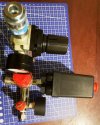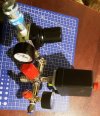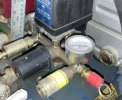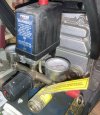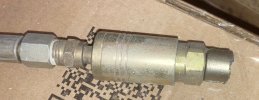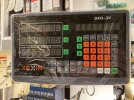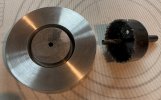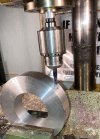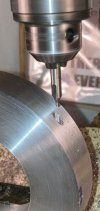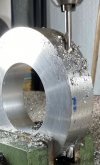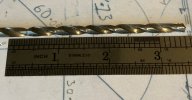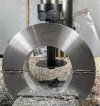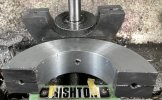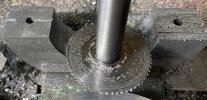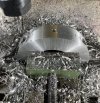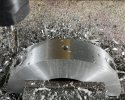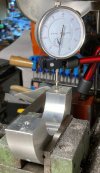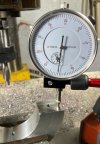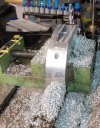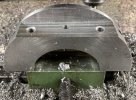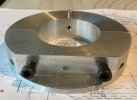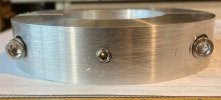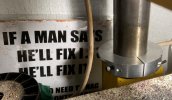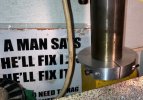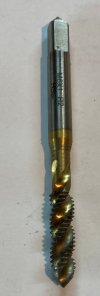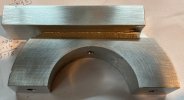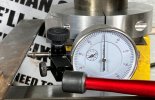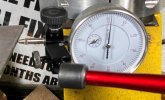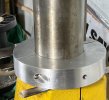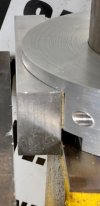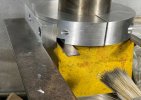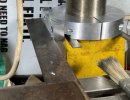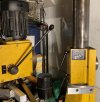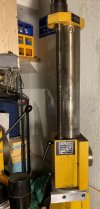OzzyO
Western Thunderer
Hello all,
so what do you get for 70 odd quid?
Boring head and arbor, eight boring tools (that could also be used on the lathe) and a block to keep them in (hole are a bit big about 10mm).

Some close ups of the boring head. You get three mounting holes for the tools, two in the bottom and one across the body. To use the one across the body you would have to grind you own tools,as the boring tools are meant to be used in the bottom two holes.


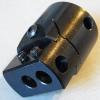
A close up of the indexing wheel, I've not worked out what the scale is yet, but I think that 1 rev will be 0.5mm (so 1mm off the bore), so per each index 0.02mm (0.0008") off the bore.

In place on the mill.

Summery,
Good points,
well made and finished, good clear indexes (I may fill them with some black latter on), looks like it will have a good range using the three holes, tools look very good and well ground.
Down side,
arbor could have done with two flats on it to help with tightening the head on, M14X1mm thread was a bit tight (but better than lose), the screw above the index wheel caught on the M14X1mm thread on the arbor, you have to use two Allan keys, one for the slide lock and one for the index, the wooden block could have been a bit better (very minor).
Boring head good value, tools sound a bit dear but not really at £3.07 each.
All in all a nice bit of kit so 8.5 / 10.
OzzyO.
PS. please feel free to ask any questions.
PPS. a link to the full thread over on the other side,
http://www.rmweb.co.uk/community/index.php?/topic/17222-lathes-mc-tools/
so what do you get for 70 odd quid?
Boring head and arbor, eight boring tools (that could also be used on the lathe) and a block to keep them in (hole are a bit big about 10mm).

Some close ups of the boring head. You get three mounting holes for the tools, two in the bottom and one across the body. To use the one across the body you would have to grind you own tools,as the boring tools are meant to be used in the bottom two holes.



A close up of the indexing wheel, I've not worked out what the scale is yet, but I think that 1 rev will be 0.5mm (so 1mm off the bore), so per each index 0.02mm (0.0008") off the bore.

In place on the mill.

Summery,
Good points,
well made and finished, good clear indexes (I may fill them with some black latter on), looks like it will have a good range using the three holes, tools look very good and well ground.
Down side,
arbor could have done with two flats on it to help with tightening the head on, M14X1mm thread was a bit tight (but better than lose), the screw above the index wheel caught on the M14X1mm thread on the arbor, you have to use two Allan keys, one for the slide lock and one for the index, the wooden block could have been a bit better (very minor).
Boring head good value, tools sound a bit dear but not really at £3.07 each.
All in all a nice bit of kit so 8.5 / 10.
OzzyO.
PS. please feel free to ask any questions.
PPS. a link to the full thread over on the other side,
http://www.rmweb.co.uk/community/index.php?/topic/17222-lathes-mc-tools/


